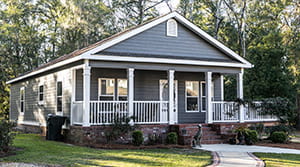Learn what an adjustable-rate mortgage is

If you’ve ever financed a home, chances are you had a fixed-rate mortgage, where the interest rate stayed the same for the duration of the loan. While fixed-rate loans are pretty common, an adjustable-rate mortgage (ARM ) is another option to consider. ARMs, sometimes called variable-rate mortgages, tend to be popular when interest rates are high.
Before you choose an adjustable-rate mortgage, be sure to understand how an ARM works and if it’s right for you. I encourage you to find a loan officer you trust who is willing to explain the details and how an ARM could affect you financially. They should be able to guide you to other home loan options as well.
Get started with these adjustable-rate mortgage tips and terminology:
Adjustable-rate mortgages have a lower initial rate
You'll start with a lower interest rate than a fixed-rate mortgage, and that translates into lower initial payments. This can make it appealing, especially in the short term, if interest rates are currently high.
Mortgage rates may change
With an adjustable-rate mortgage, your interest rate and your monthly payments may adjust over time if rates change. ARM borrowers need to be prepared for higher payments in a rising rate environment.
Rate caps
Most adjustable-rate mortgages have caps on how much the rate can go up or down. Be sure to ask your loan officer about rate caps if you’re considering this type of mortgage.
Know your timeline
An ARM can be a smart idea if you plan to sell or refinance the home in a few years, letting you take advantage of the low rates early in the life of the mortgage.
Understand the terms
The loan terms of an adjustable-rate mortgage can look like a ratio, such as 3/6 or 5/6, in which the first or top number indicates the initial locked period of the loan in years and the lower number represents the adjustment period—how often the interest rate can change after the initial period. For example, a loan term of 3/6 would have an initial locked period of three years and the rate could change every 6 months after that.
At Banner Bank we offer adjustable-rate mortgages with various initial locked rate periods up to 10 years along with fixed-rate loans to purchase, refinance or build your home. We pride ourselves on communicating with borrowers. As part of our service commitment, we’ll provide an estimate of your new payment and explain the options available to you. Learn more about Banner Home Loans.

















